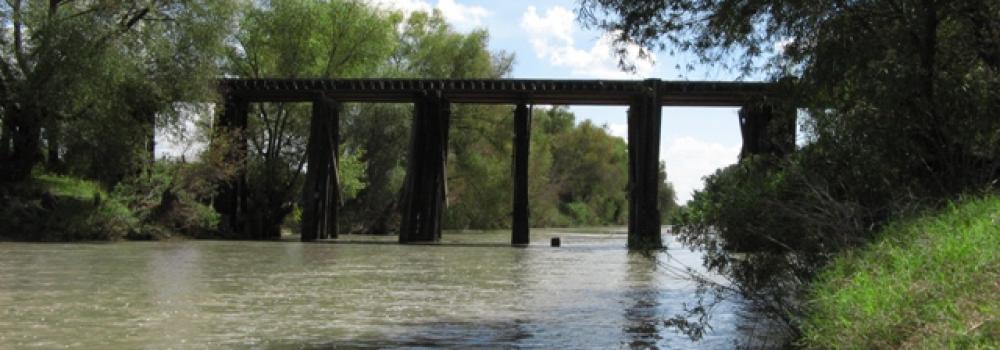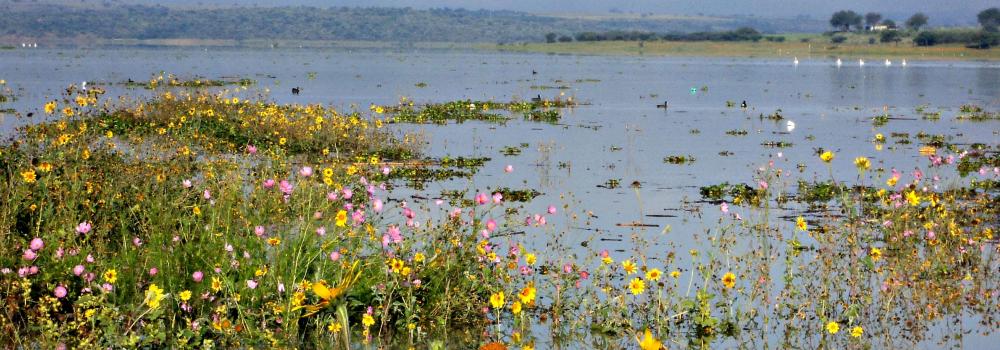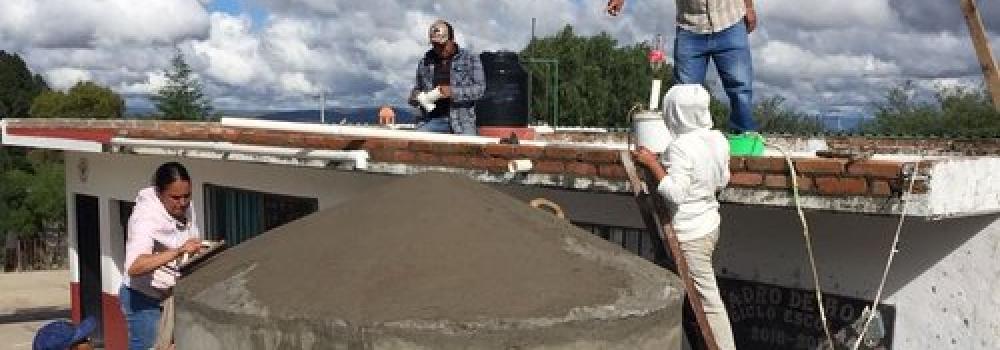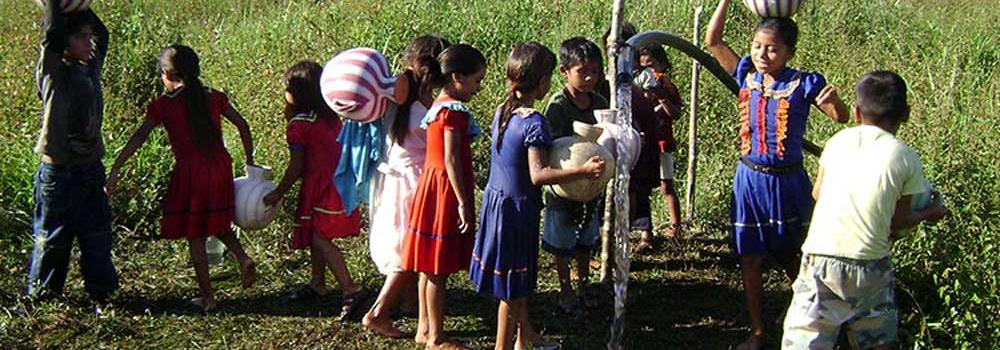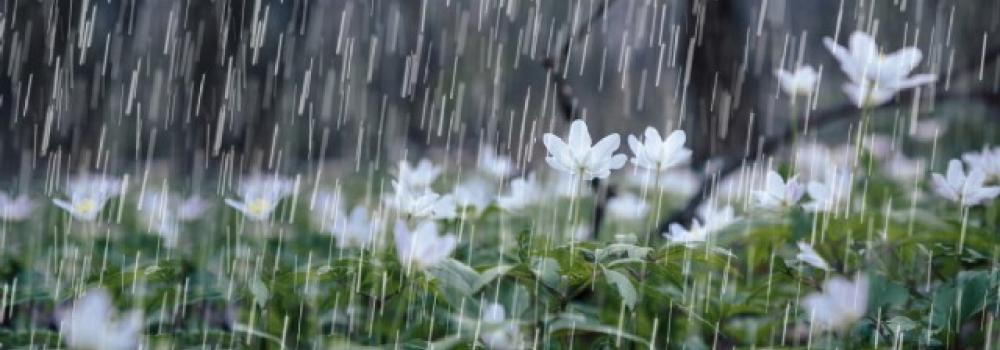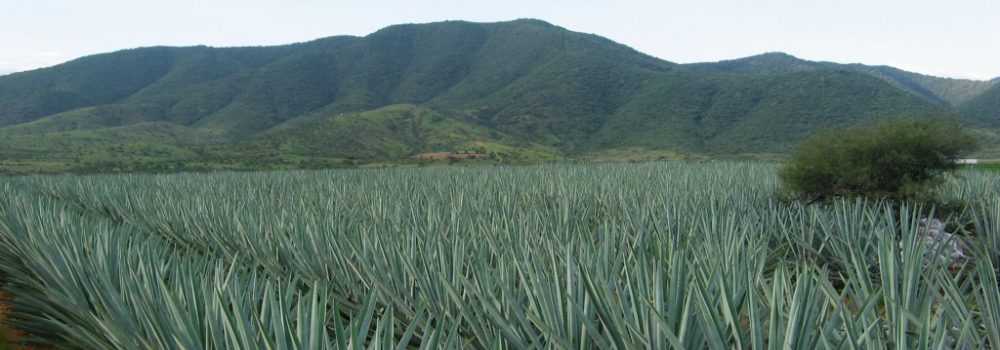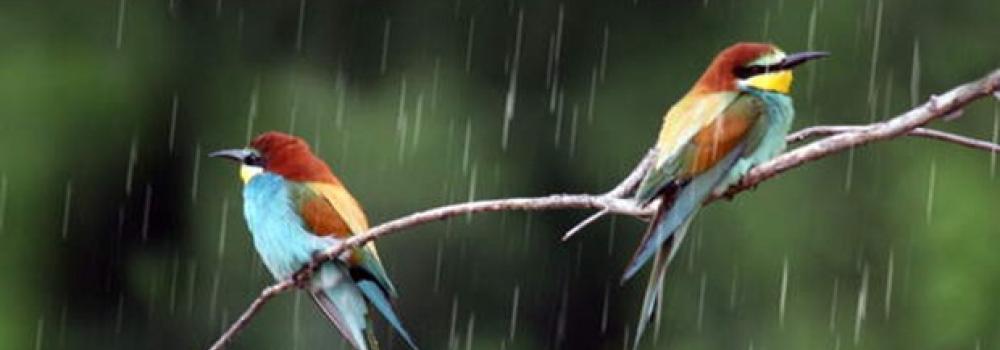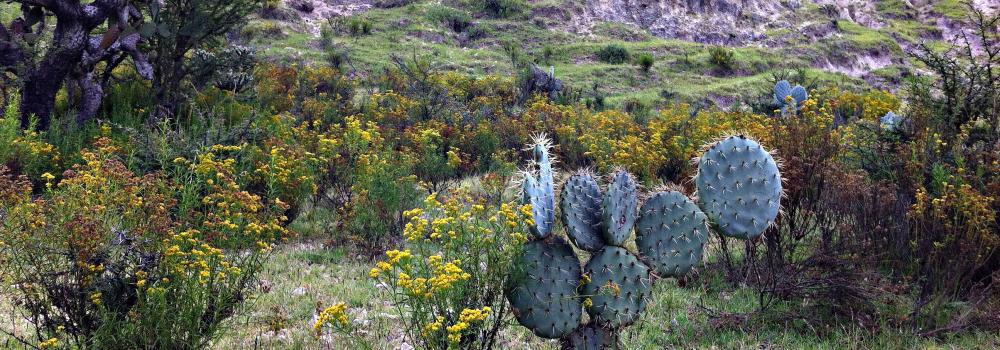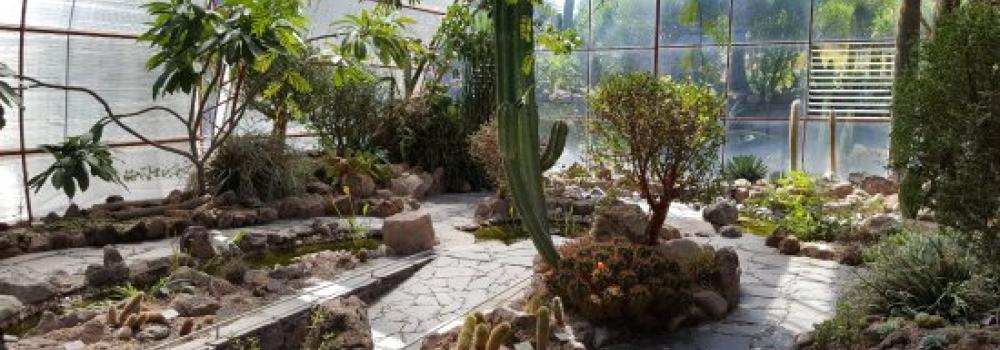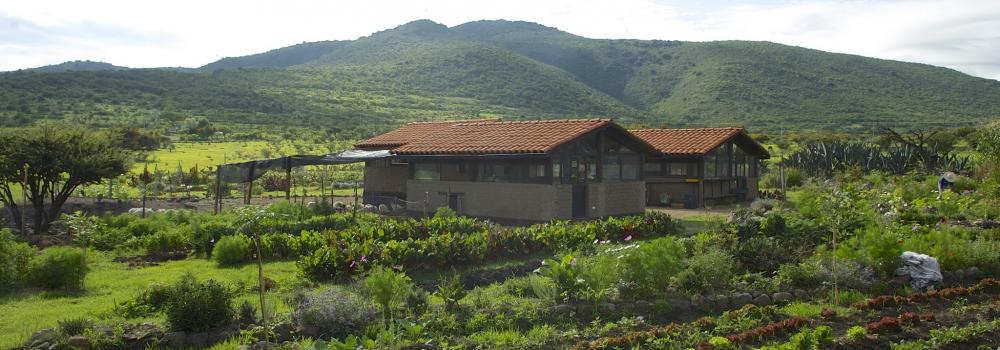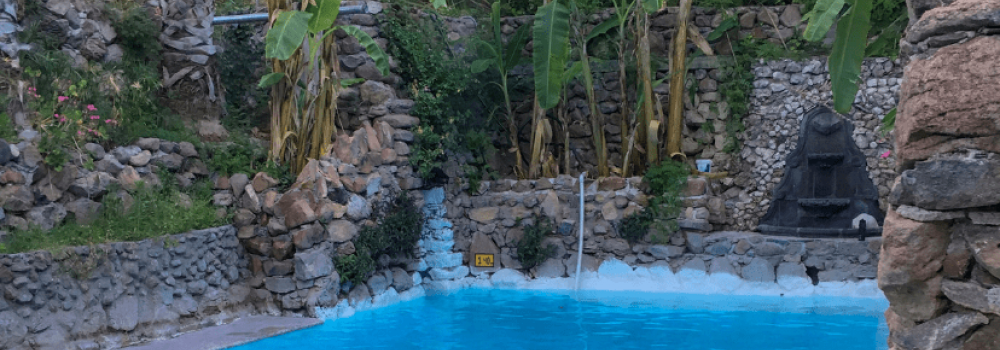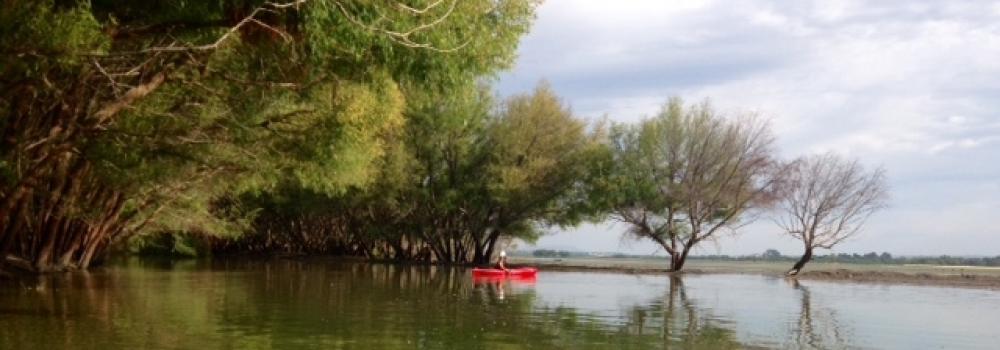Welcome once again to the Water Dialogues. This time we´ll address the topic Water Management and Use of Water in Rural and Urban Areas which promises to enrich further our understanding of what we have been discussing since last May: the impact of climate change, the effects of drought and desertification, the inequity in water distribution, the abuse in water consumption. However, there are solutions to all of these problems and our focus, today, will be precisely on those solutions.
Our panelists are Canadian journalist Chris Wood, engineer Jesus Arteaga and as moderator, the lawyer César Arias de la Canal. Given the diversity of visions, we have the opportunity to learn in detail the strengths and weaknesses in the management of water in other parts of the world and in our local environment.
Chris Wood is a winning author of several books on the protection of our water resources and the water crisis in North America. He has long been a correspondent in over a dozen countries, including Korea, Spain and South Africa. During the past 10 years he has focused on the issue of the future of water and as editorial coordinator of the Tyee Solutions Society in Vancouver, he primarily focuses on investigative journalism.
Jesús Arteaga is an agricultural engineer and manager of the Technical Groundwater Board of the Laja River (COTAS), an association that is responsible for counseling farmers in the northern region of the State for the proper use and sustainable management of groundwater. As an agricultural engineer specializing in protected horticulture, greenhouse structures and crops without soil, he has served as a consultant in production in greenhouses and irrigation systems .
Our moderator, Cesar Arias de la Canal , a lawyer , has been an intense scholar and human rights activist and advocate of natural and cultural heritage of San Miguel de Allende. He was an original member of the Mexican Section of Amnesty International. Author of books and publications on social and environmental issues, he is currently President of the Botanical Garden and Natural Area El Charco del Ingenio, a project he founded with other sanmiguelenses and residents in 1990. He is also a member of the citizens’ group Vamos por San Miguel AC
Chris Wood: We’re talking today about the management of water in urban and rural areas. There’s a lot to talk about that, but I’m going to concentrate on one idea: how we can increase our water ‘income?’ That’s to say, how can we increase the water that’s sustainably available to us to use? To be more specific: the water we receive from the skies, and don’t lose to ‘evapotranspiration’ can be regarded as our water ‘income.’ Not all of it is available for human use. Nature also needs water as well. Our ‘income’ changes from year to year.
Nonetheless, that’s what we have, wherever we live. And sooner or later we’re going to have to learn to live within that income. We’re not doing that now in most of the world. We’re taking ancient water from aquifers that aren’t being refilled by rain. Eventually we’re going to empty our water ‘savings’ and we’re going to have to live only on our water income.
And meanwhile, the challenge of doing so is getting harder. In some places, we’re getting less rain—or we’re losing more of it to evapotranspiration. And everywhere around the globe, our water income is becoming more irregular. The climate change people feel wherever they live is conditioned by their location, their local terrain and topography, their so-called ‘micro-climate.’ Even so, the main trends are evident. As others have mentioned in earlier dialogues, those are more weather extremes: more heat, more humidity, sometimes stronger winds, in the north or on mountain peaks less snow, more persistent droughts.
Then more ferocious downpours than we’ve ever seen. And, as Canada’s most famous weatherman, Dave Phillips, remarked to me once: “It’s not the averages that destroy you. It’s the extremes that do that.” Now for the better news. In much of the world, there’s been a vicious cycle of drought, then famine that drove people out of desperation to cut down all their trees… making the droughts even worse. But see… those cycles can also run in reverse. That is, we can activate virtuous cycles that improve the climate, daily life, the economy.., all while increasing our water resources. These are ‘win-win-win’ opportunities.
The secret is that nature—plants, trees, grasses.., all the living elements of an ecosystem—is the ultimate water provider. In general, the greener the landscape, and the more organic material is incorporated into its soils, the water it captures and stores in aquifers when it rains. And, the less water runs off to overwhelm storm drains or water treatment systems, to threaten us with floods, or to be lost to evapotranspiration.
The great opportunity, for the countryside as well as the cities, lies in the fact that we can do a lot to increase our water income, a lot to reduce our losses, and a lot to stretch the water that’s left. And all the evidence indicates that we achieve that more cheaply by investing in nature—within and outside cities—than through engineering. Perhaps the most famous example is New York City. A couple of decades ago, it faced the fact that its drinking water quality was about to fall below safe levels. The city’s water department discovered that a new treatment plant would cost $6 to 7 billion—90 billion pesos.
But they had another option. Investing about 1 and a half billion dollars, 20 billion pesos, they could promote change in farming practices, restore riparian vegetation and begin to change land uses in the region north of the city that supplies New York’s water. The result of investing in nature, water was so much cleaner that it no longer needed to be additionally treated. I know they’re doing something similar here in Mexico, in the Sierra Gorda.
Within cities, we’re finding the same thing. In three US cities (Seattle, Portland Maine and Portland Oregon), using nature in the form of strategically located gardens and other ‘green engineering’ to control storm water runoff, was between seven and 200 times cheaper than traditional drainage. In other places, they find that created wetlands clean up contaminated water more cheaply than treatment plants.
And remember: techniques like these bring bonus benefits. They help to refill aquifers. They increase habitat for wildlife. They improve the surrounding micro-climate. The work on individual properties, or on larger scale the same techniques can revive entire regions. An example of the first is less than ten kilometers from here. Tens of thousands of trees planted 15 years ago or more, before the Candelaria development was built, now not only give it a very pleasant micro-climate … they’ve also helped keep the well that supplies its water at a stable level.
In Africa, they’ve planted millions of trees just south of the Sahara desert. The trees have revived three million hectares of former semi-desert, made fields fertile again and making daily life a lot more pleasant. They also get fruit, forage, firewood and timber from the trees.
Increasing the organic content in soils is yet another example of how we can manage water with nature rather than against it. In one US study, they showed that increasing the organic content of soil from just one per cent to five per cent, increased the amount of water stored in a cubic meter from 15 kilos, to 88 kilos—almost six times.
In more than 50 countries, small landholders are using this effect to increase their yields of rice and other cereals, including corn as well as legumes and other crops, by 50 to 90 per cent–almost doubling their harvest. Using less seed, half the water, less fertilizer… even less labour. The only thing: the need to keep the soil well aerated, and well provided with compost.
That kind of solution needn’t cost much. In any city we throw out hundreds if not thousands of kilos of organic matter every day in kitchen waste from homes, hotels and restaurants.
In India as well as Africa, doing nothing more expensive or complicated than digging shallow holes in the ground in the rainy season significantly increases water infiltration, the productivity of nearby gardens and the subsequent harvests.
But there is a role for technology also. In most countries, large-scale agriculture uses more than two-thirds of the water. I believe it’s up to 80% in Mexico. But here too we can achieve savings. In Alberta, Canada, for example, irrigation districts buried their distribution canals in pipes. Farm operators changed how they delivered water to their fields. As a result, over the last decade, they’ve been able to expand their irrigated acreage by 15% in the last ten years.., while reducing the amount of water they use by 30%. One thing that’s allowed is for some former agricultural water to be delivered instead to human use.
There are many of these kinds of ‘win-win-win’ solutions. I don’t have time to go into detail on others, but they’re not difficult to find, if you search. So, let me finish with this. More than money, these kinds of initiatives need informed, active, committed citizens ready to work together to promote change. And here in this room we have two demographic groups with key assets for that kind of work. We have students who know how to research, how to use the internet.
You’re young. You know how to use social media. You Tweet! You’re also connected through your family and social circles with others who have influence in your communities.
You older guys, maybe retired—at a guess, like me, not Mexican—you have complementary assets. Professional knowledge and skills that may be pertinent to the better management of water and ecosystem revival. You probably have a little time on your hands. But what I most want to leave you with is this. It’s not a case of water for people or water for nature. The more nature flourishes, the more water we’re going to have, and the more resilient we’ll be in the face of extreme changes in the weather. This is the idea that I express as our ‘natural security.’ And it’s more basic than civil security. Safe streets aren’t worth much when you’re dying of thirst. And all that stands in the way of our restoring our natural security is action, collective action.
Jesús Arteaga: As manager of COTAS of the Laja River area, I must make very clear that the control and management of water must be in the hands of the authorities. We are not the ones managing the water resources as has been misunderstood. We are a nonprofit association that wants to help so that the authorities can actually enforce the law and manage the water correctly.
We started in 1999 and we have the structure of a board of directors with the participation of representatives of all the water consumers in the area: industrial, agricultural, domestic, urban and public. Our association is acknowledged by the State Water Commission( CEAG) as an additional body of the National Water Commission(CONAGUA). So it can enforce some of the National Water Commission regulations. We participate in the water management working towards its efficient use and the preservation of its quality considering it is a vulnerable finite resource.
Water has a limit and we have already gone beyond that limit. So we regulate the extraction. There are two areas that we are most concerned about. It is already known that 83 percent of the water use in this region is for agriculture. But no one takes into consideration that the cultural aspect of our farmers is quite complicated and we deal with this also.
You can have all the technology available like the one Chris mentioned, however, the habits and understanding of the farmers concerning sustainability is quite complex. Our association works very hard in applying the technology but we are more focused in raising awareness and trying to have an impact in the cultural change of the farmers. 80 percent of the farmers in the aquifer are 60 to 80 years old. Trying to change their way of thinking is almost impossible. Unfortunately we don´t have enough time to reverse the situation we are dealing with.
Another obstacle we deal with is quite complex also. As a civil association we have representation in the Water Commission. We participate in the definition of policies and represent the Steering Committee of the Water Commission in the State, but unfortunately the four municipal authorities of this area do not work together for shared solutions. The decisions of the Steering Committee are made according to the resolutions passed by the Water Commission so all the projects and initiatives from the municipalities have to be authorized by the Water Commission, otherwise we cannot participate.
Unfortunately the operating bodies for drinking water like SAPASMA feel they are autonomous and they want to do everything by themselves. We don´t want to do their job, we just want to improve their own projects since we also have participation in the Trust for the Aquifer. They have a lot of money, but if there are no projects coming from the municipalities, the money remains there. So that Trust moves the money to other Trusts within the State Government.
Another problem we face is politics. Guanuajuato had a priority area where the Conafor works in reforestation and restoration. However, when the PAN party won in the state, that area was reduced by 10 percent.
We also have representation in the Lerma Chapala Basin Board. Five states have to be there. And they do make important decisions that include all the basins, not just the aquifer.
Which are some of the issues that we deal with in this area? As a nonprofit association we consider the use of two aquifers: the Allende Aquifer and the Upper Laja River Basin. We work 67 percent of the San Felipe area, 85 percent of the San Diego de la Unión area, 100 percent of Dolores Hidalgo and 92 percent San Miguel de Allende. We are also present in Silao with 2-5 percent of the area and a very small percent in the León area.
Some argue that this division of the aquifer is administrative and political, but you must know that in order to receive funding for the programs, you must go by the law. If we change the name and boundaries of the aquifer we´re not going to receive any support because those changes will not be acknowledged. So the aquifer has these problems and are beyond our control.
Our agricultural area is mostly dedicated to exports. This is good for the State but it´s not good for the aquifer. Of course, it creates jobs and wealth but also an overexploitation of the water resource because parallel activities that should be done, are not being done, such as reforestation, restoration of the Laja River, recharge of the basin, for example.
We also have a lot of industrial activity because of our good weather and location. However, the industries contaminate the most and don´t pay much attention to cleaning their discharges. Our authorities don´t consider we have great environmental damage.
The priority right now is the Lerma Chapala Basin, not the aquifer. But within the area of the five states that form the Lerma Chapala Basin, this (the Allende aquifer) is the point of supply but no one pays attention to it. We pay attention to the southern part of the state, to Michoacan, to the state of Mexico. But not to the northern part of our state of Guanajuato.
We also work with the Mexican Institute of Water Technology. We have in process two studies of the aquifer in the areas we need to recharge. That is exactly what Chris is saying: reforestation, preservation, vegetable coverage.…We have done this type of work with the Conafor (Consejo Nacional Forestal). We worked 500 hectares in San Miguel de Allende for preservation of soil and water. This year we´ll be working 600 hectareas in San Miguel and Juventino Rosas, as well as 400 hectares for maintenance of the previous reforestation.
We also take measurements. Simulations are very good but the truth is we have to measure the water movements within the aquifer in order to know what is going on. We have a monitoring network with barometric zones in the Allende aquifer and Upper Rio Laja aquifer with readings every 24 hours that have to do with temperature and water movement. So we have real knowledge concerning the reduction of the water levels. If you ask the authorities, they just don´t know.
If we talk to the operating bodies like SAPASMA, they will say two years ago they had to drill deeper for the wells…It´s all very vague. We have concrete measurements of how much the water is being reduced since we know how much the temperature is increasing. Temperature has a lot to do with the amount of fluoride and arsenic. So the high temperatures have to do with the presence of these heavy metals.
The agricultural areas have certain problems with the presence of sodium. There are several ways to get rid of sodium in agriculture, but to get rid of fluoride and arsenic in drinking water is difficult because of the high costs. So we have to do our best to avoid that contamination. That’s why we have these monitoring areas in order to decide which actions must be carried out in order to reduce these heavy metal concentrations.
We have measurements from 1996 to 2012 and we have observed a reduction of more than100 meters in that time. For the Allende Aquifer it´s quite complicated because we don´t have a recharge area anymore. If we don´t retain the rainfall and do our best to have infiltration we will not be able to recover the aquifers. We need reforestation, retention works, restoration works, vegetable coverage, increase of organic matter and all this is what we call water culture for our farmers.
Farmers don´t change their habits that fast even if we show them the benefits of using less fertilizers and better watering systems. They apply this knowledge little by little and it would take 60 years from now to see a progress. So we are not benefiting the aquifer. If a farmer is more efficient reducing irrigation from 30 to 60 percent, instead of saving that water he uses more land to irrigate, so the problem never ends. The farmer is not really concerned about the water resource. And there are a lot of foreign companies that export their products and they don´t care about water either. They rent a ranch and when they see that the water level is not as good, they move to another ranch. So that makes things worse. And who stays with the problem? The owner of the land. To reverse this situation is almost impossible.
There is crop that is very important for the area that has been demonized. I´m talking about alfalfa. Everybody says that those who have alfalfa don´t care about water. One hectare of alfalfa needs 5,500 cubic meters of water. But broccoli uses 12,000 cubic meters. Why? Because alfalfa comes from the desert. But broccoli, lettuce, cauliflower, carrot, brussel sprouts use more water. 85 percent of a head of broccoli is water. 97 percent of a lettuce is water. If we had water efficient crops we would not have this problem. We can´t tell the farmer to stop producing those crops because we´ll provoke a social issue.
We have to give other choices like asparagus, the most efficient one. Corn, beans, nopal and tuna are very efficient. The problem is the industrialization and the local culture. I´m from Dolores Hidalgo where they say that if you don´t grow peppers or broccoli, you are not a producer because those are the crops that are representative of the area and will give you status as a farmer. But these crops are not even profitable because of the high cost of production since they require lots of technology. Switching to other crops would make things easier.
In San Miguel de Allende we have about 82 wells and 85 percent of them have a certain degree of contamination. This is a critical issue. If we talk about heavy metals and bacteria the situation is serious. That´s why it´s important to use chlorine in water consumption throughout the community. Of course, we also need to collect rain water and have water treatment. In other parts of the state the surface water is being used for irrigation with certain treatment processes and better technology for crop irrigation. So there are mechanisms being used to change things, it´s good to know they exist and we need to know who can help us.
From our measurements we know that we have a deficit of 32 million cubic meters of water per year. That´s what we are pumping out of the aquifer, more than we should. If we could infiltrate the rain, switch to other crops, reforest and use better irrigation systems, we could be in a balanced situation. We are working on changing the farmers’ thinking patterns so we can have more water for longer period time.
Cesar Arias: The good thing about Jesús Arteaga´s participation is that he´s talking from the point of view of the farmer. I think the change in the farmer´s culture is needed not only for the small producers but for the large farmers as well because they are not that aware of the situation. We also need to educate the public officers and politicians as well.
Comment from the audience: I am Arturo Morales, a member of the social section of COTAS. The water emergency that we face today needs to find new public policies and planning, not only for water consumption but for business and housing development as well.
And we need to do something in the management area also. We need better management. You know very well that most of the farmers are just technicians.
Maybe they have a doctorates degree, but if they have a short term ambition, instead of a long term vision, there´s nothing we can do. Many of us would like to get in touch with you to establish that the physical reality of the aquifer is ONE. When the authorities say that we have two aquifers we are not understanding the reality. We would be very happy if you are willing towork together with us in order to adapt the legal reality to the physical one along with the federal and state laws so that we can talk about ONE planning, one strategy. Let´s not make fools of ourselves. The second thing I want to know is if COTAS is willing to help us make pressure on the authorities in order to enforce water management.
In the case of water concessions, I would like to say that right now it´s cheaper to obtain a concession for agricultural purposes than for restoration purposes, or even ornamental. We need to care for our natural corridors and learn to preserve them. There are more than 30 indigenous communities that are willing to begin to work together with COTAS.
Jesus Arteaga: First of all, as citizens you are all represented within the COTAS association. However, it´s difficult to participate with 30 communities if they don´t have a water concession. Nevertheless, the municipality is the one that represents you as water users. COTAS does not limit anyone. We all use water.
Concessions actually don´t cost. One thing is what you can pay for the concession and another what you pay to acquire it. And you pay for using federal areas. We have just acquired a concession for the preservation of migratory birds and it was granted. Sometimes there are certain requirements that are not met and it gets complicated. It´s not easy. Once you have a concession you must pay for the use of meters and services. The agricultural use does not pay for those services. It is established by law.
When you say we must consider just ONE aquifer, that would make our problem worse. If we say that Laguna Seca, Jaral de Berrio, Dr. Mora and Juan José Iturbide, Allende and the upper basin is one aquifer, then you can drill a well in San Felipe and bring the water to San Miguel. That´s not allowed and you couldn´t do that if you wish.
We´ve been having more exploitation since 1968 thanks to illegal wells drilled with the permission of the Water Commission that is one of the most corrupt entities in Mexico.
Comment from the audience: I am Enrique Garcia y García: I think both of you are right because there is only one aquifer, but because of the groundwater movements there are isolated situations which means that it can be depleted in one area very quickly, and not in another one. The distribution of the aquifer is a political distribution in the surface, not underground. Underground it is all the same and it moves and changes. The water, as such, has a lot of facets so we need a series of solutions.
The water measurements of the COTAS association are very important, as well as the OCAS tasks as water observers, in this case, we are dealing with adults. Right now I work with young children and teenagers. We are creating surveillance using programs such as the World Water Challenge and it´s being organized with members of OCAS like Mike Lambert. In Dolores Hidalgo they are observing surface water detecting the degree of contamination.
My suggestion is: let´s forget about ground water as such because it´s complex. So let´s work with surface water. That is something we can do. There are many problems with the legislation, policies, operating bodies…we have thousands of problems so let´s begin with something concrete and I am betting on young students so they are educated on how to take care of their water resources.
Comment from the audience: My name is Alvaro Nieto and I´m a farmer. The point that caught my attention more than any other from Chris´s talk is the amount of water that can be retained once we can increase the amount of organic matter in the soil. He said that with less than 1 percent we can retain between 8 to 10 liters per cubic meters, but if we have more than 5 percent the retention would be up to 80 liters per cubic meters. That information is beautiful and I want to share an experience.
I have been a farmer for 20 years and I took a piece of agricultural land that had 0.6 percent of organic matter. For 20 years I´ve had no time to resell or use the waste of our crop so we put it back into the soil. If we take into account that only 15 to 20 percent of the biomass that is produced in a crop is used for human consumption, the rest is waste. And if you are able to reincorporate the crop waste into the soil, I can assure you that in 20 years you can increase the organic content from 0.6 to 4.5 and that retains the water.
Currently, the amount of nitrogen we have in those soils is less than 40 percent of what is used in conventional agriculture. In the case of organic agriculture, just by having a rotation of crops and legumes that actually fix nitrogen from the air, we can have very decent crops.
I wish we had more asparagus in Guanajuato. The problem is a social and technical issue. It takes 4 years from the time we plant the seed and the year you harvest it. It´s difficult to bear the cost of a 4 year crop in Mexico. I don´t like broccoli, it needs between 40 to 60 liters of water for one head of broccoli. But these crops, like cauliflower as well, do generate good jobs. And we need that.
On the other hand, the alfalfa has a 6 meter root so it can resist draught. The problem is the way they irrigate it, the way they flood the fields. It´s totally inefficient.
Also, the Bajío region has always been the grain producer of Mexico for 400 years. During colonial times, it supplied Spain, Cuba and all the Caribbean. It still is the grain producer even though we now compete with Sinaloa and Jalisco. The amount of grain planted in El Bajío is incredible. All the barley and wheat are irrigated with a flooding method called melgas. We tried to use covers, instead of flooding the soil and the yield increased 10 percent without using so much water.
So that´s good news.
Question from the audience: My name is Uriel Hernández, the general director of the water agency in San Diego de la Unión. We are here today because we are very concerned about the water situation in our region. As an operating body we change every 3 years and it´s very important to acknowledge the need to be in coordination with a nonprofit association such as COTAS and other institutions.
As part of the governmental structure, we have a short term vision of the water management. For example, if we have the reduction of a well, I have to find a way to replace it and create a network of water in an adequate situation. So I ask you to insist and not get tired of demanding the attention of the authorities, the mayors, the city hall members because I know that out of 10 city hall members, if one pays attention, if he or she raises awareness, then we are making progress.
Cesar Arias: I invite you to be a member of OCAS. As a civil society we can do more than the authorities themselves to help others.

